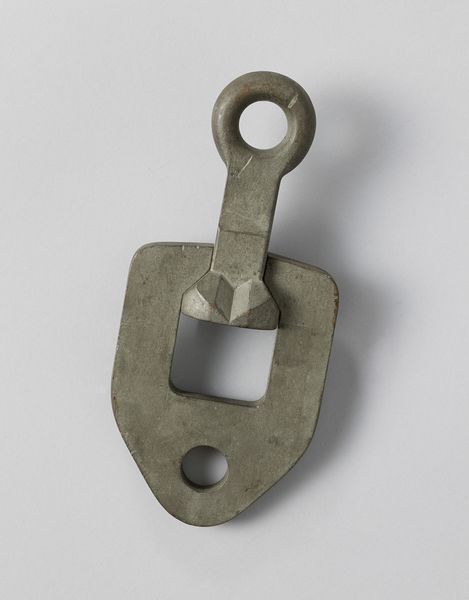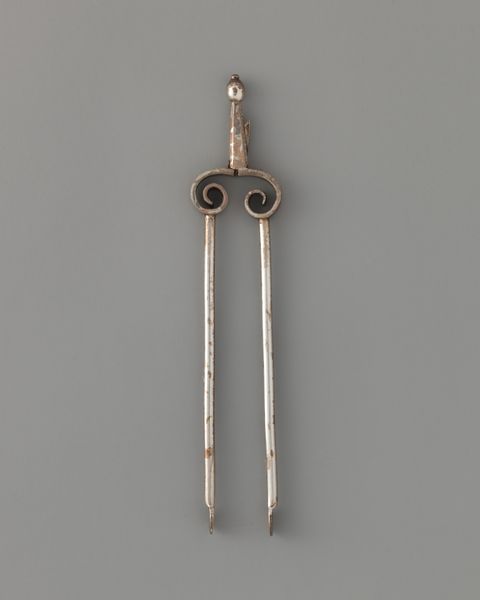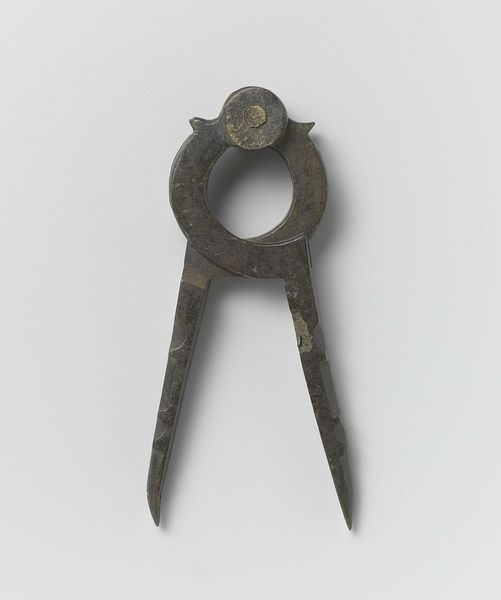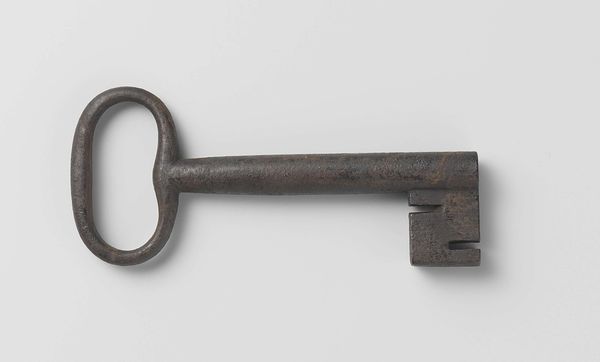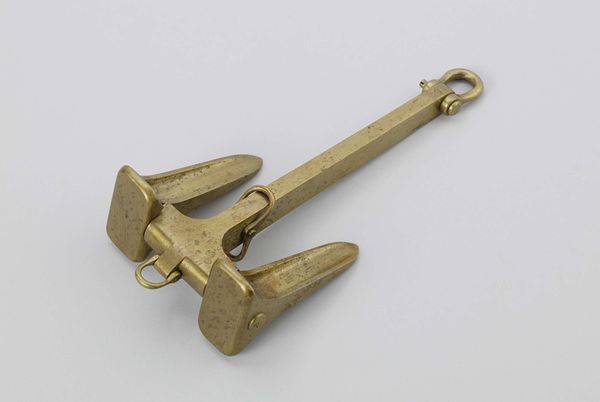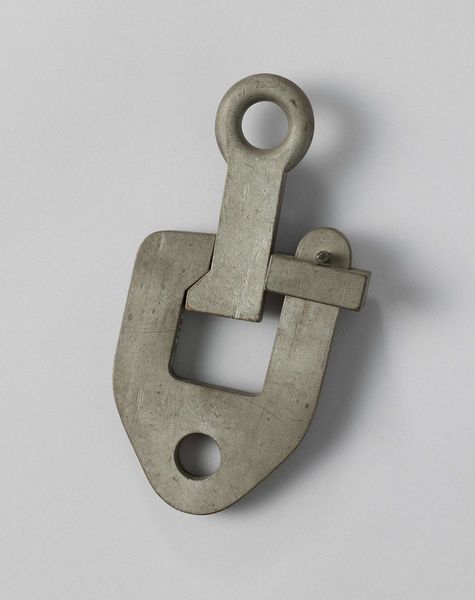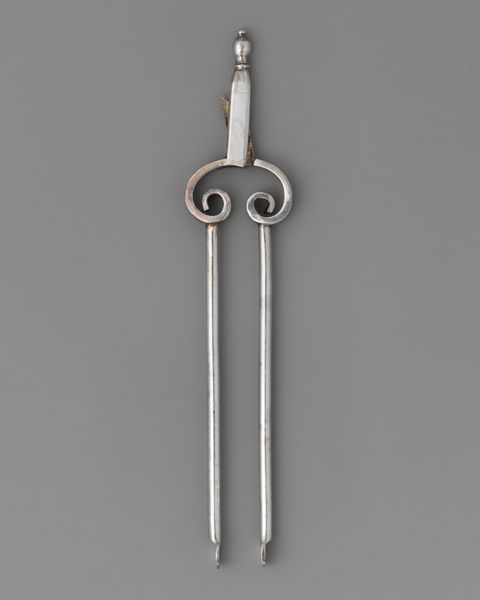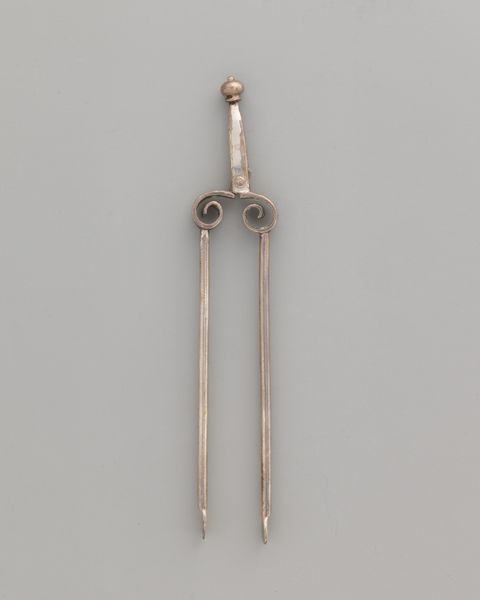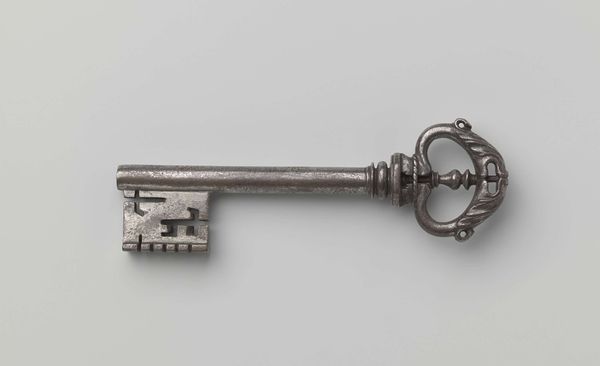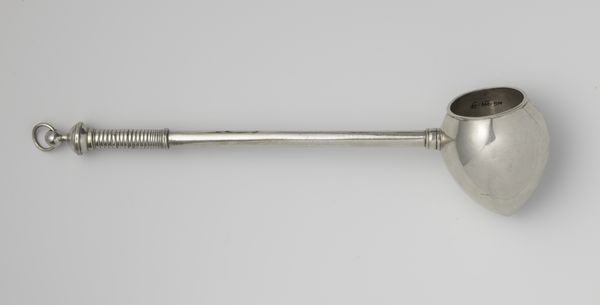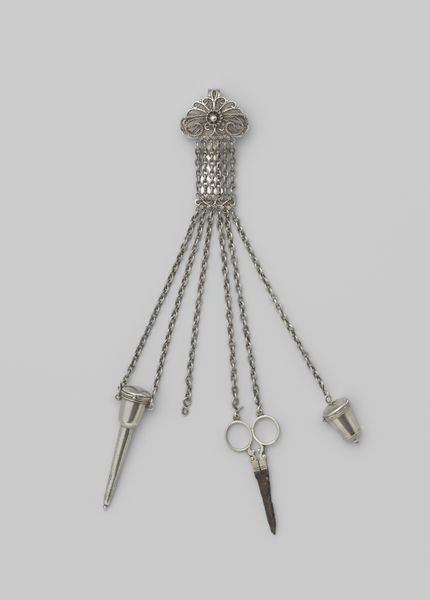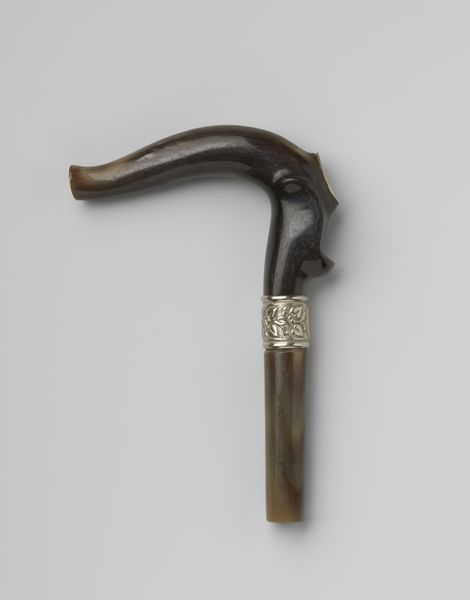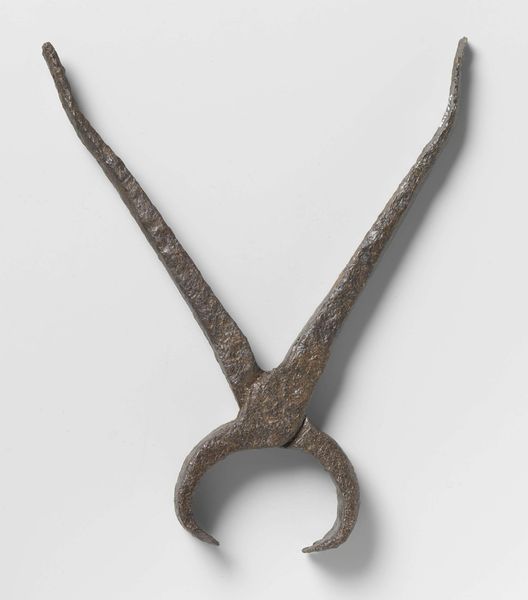
Dimensions: height 3.1 cm, width 1.4 cm, depth 0.2 cm
Copyright: Rijks Museum: Open Domain
Curator: Before us is a key, specifically a “Sleutel behorend bij spilhorloge," or key belonging to a verge watch, made around 1777. It's the work of Jean Antoine Lépine, crafted from metal. Editor: It's surprisingly elegant for a functional object, isn't it? There's a stark simplicity to the intersecting ovals. Curator: Absolutely. Keys throughout history have represented access, control, and secrets, acting as potent symbols of power, both secular and spiritual. Their visual vocabulary connects directly to deeply held notions about knowledge and authority. Editor: Yes, and even in this miniature, almost skeletal form, it holds the entire design in check—the cool, almost rusted coloration only heightening the feeling of aged secrets. Curator: Lépine worked during the Rococo period, although you see a degree of restraint here. Keys, you know, had an amuletic quality for many people. Worn or carried, they could provide symbolic protection, and this piece retains that air of contained strength. Editor: It is true that the material—that subdued metallic luster, a hint of age that seems almost burnished—works to focus the visual weight, a tactile echo of its real-world purpose. If you consider how one uses a key, that tension is echoed perfectly here, that expectation that one might place some considerable force on it. Curator: What is fascinating to me is the maker's mark, an artifactual connection. How do we understand a personal symbol meant to guarantee authenticity and how might its application speak to both societal anxieties and cultural continuities? It becomes another type of key, unlocking the hidden stories of craftsmanship and ownership. Editor: So true; thinking of its purpose changes how one sees its very shape! Keys, once instruments of privacy and power, now lie static in the remnants of antique filigree! Curator: Considering the symbolism embedded in this piece and reflecting upon its miniature scale has made me even more intrigued by how we construct our sense of agency, from unlocking doors to unlocking our understanding of history. Editor: Yes, it brings one back to the functional basis of what is around you as well as the pure abstract beauty contained in all things. I've gained a more profound insight into how formal components reflect on an item's real-world applicability!
Comments
No comments
Be the first to comment and join the conversation on the ultimate creative platform.

